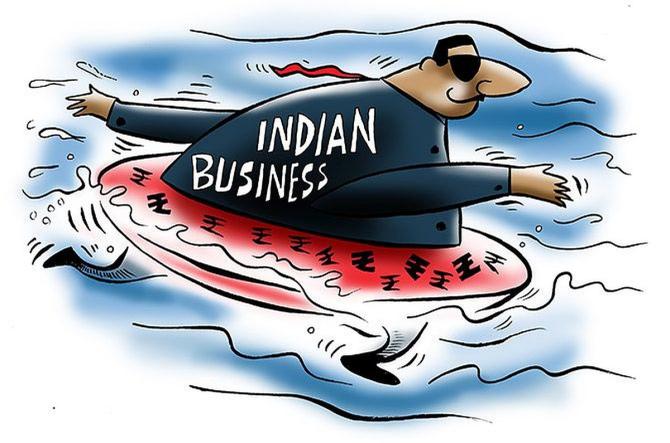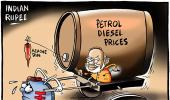This year, a bevy of companies that qualified under the production linked incentive (PLI) scheme failed to achieve their investment or production value targets or both.

This failure in their very first year of the programme is something the government might not have anticipated.
The deadline to claim incentives for the first year ended on March 31, but the companies concerned blamed their problems on the pandemic for disrupting supply chains (the chip shortage being one problem), delaying factory construction.
Delayed government permissions meant that PLI-bound companies had less than 12 months to get started.
The hit has been taken by companies across IT hardware, telecom products and mobile devices.
In some cases, while they have achieved their investment target, they failed to meet their production targets.
According to industry estimates, only two or three players in IT hardware sector out of the 14 that qualified for the scheme are expected to cross the magic line.
In mobile devices, despite an extension of the scheme for a year due to the pandemic, three to four of the 10 eligible players are not expected to make the cut.
So they lose one year of incentives.
The losers include home-grown players such as Lava International and Optiemus Electronics (both declined to comment).
Even among global bigwigs Foxconn’s Rising Star, which manufactures phones for non-Apple customers, looks highly unlikely to make its targets.
The PLI schemes offer incentives for phones that cost more than Rs 15,000, a market that is still tiny in India.
A spokesperson of the company declined to comment on the issue.
In telecom products, a joint venture between Bharti and Dixon Technologies has written a letter to the government asking for a one-year extension because it could not make the investment required to set up a plant.
Telecom gear maker HFCL also wants an extension.
Says Pankaj Mohindroo, president of India Cellular and Electronics Association: “The huge supply chain disruption in 2021, especially for chips and more so for domestic players who were not part of any global supply chain, has really hit them hard.”
A local mobile device maker laments: “Being an Indian player we were last in the chain for supply for global semiconductor chips.
"So, production was hit badly. We expect FY23 to be much better.”
But are these problems due to the pandemic or are they teething problems associated with implementing a complex scheme?
The government allocated Rs 1.93 trillion for 15 sectors across five years as incentives.
Companies like Apple and Samsung have demonstrated that incentives can work — the scheme has helped them push mobile device exports for the country to $5.5 billion in FY22, a 75 per cent growth over the previous year.
The industry is gearing up to double that number in FY23.
So the PLI scheme, when it gets cracking across 15 sectors, is expected to bring in incremental revenues of Rs 30-35 trillion.
Rating agency Crisil predicts that the scheme will play a key role in the country’s tryst with capex recovery.
Investments will take time to hit the ground as many of the big schemes are only just being finalised and will begin from FY23.
Crisil estimates that just 22 per cent of the capital expenditure expected under PLI has kicked in for seven out of the 15 sectors.
For instance, in the PLI for advanced chemistry batteries that will power electric vehicles, the focus is clearly on import substitution.
But it was just a few days ago that the eligible winners were announced.
These players will account for about 16 per cent of the overall incremental investment is expected in all PLI schemes.
Also, buoyed by the huge rush from industry the government has substantially tweaked the PLI for making solar PV modules by increasing the allocation nearly fivefold to Rs 19, 500 crore and pegging it to 90 per cent value addition with the hope that it could become an important export opportunity.
This sector is expected to account for one-fourth of PLI investments across 15 sectors.
A fresh round of bidding (earlier some companies had already been chosen) is expected soon.
PLI schemes are also expected to create six million jobs but more than half those numbers will come from five sectors — speciality steels, ACs, LEDs, autos and components, and high-tech mobile devices.
Apple, with its three vendors, is expected to account for eight per cent of the total job creation.
Exports are an important goal too, even if initial targets have been trimmed in some sectors.
In IT hardware, for instance, the export target of 75 per cent production value has been reduced to 37 per cent.
At least nine sectors have export potential.
But even here global mobile device makers seem to have taken a large part of the burden — 60 per cent of total production in five years.
Only time will tell whether these targets will be hit. But companies are also facing challenges due to ill-defined schemes.
In IT hardware the initial scheme was to make India into an export hub, even though most laptops were imported.
The incentive scheme was pegged so low that it did not account for the cost disability with China.
As the CEO of a leading domestic consumer electronics firm eligible for PLI, explained: “India imports over 90 per cent of laptops and tablets mostly from China.
"Being a signatory to ITA-1 agreement global players can bring Completely Built-in Units at zero duty so there is no incentive to go for contract manufacturing in India.
"What you require is an attractive incentive regime for import substitution that reduces the cost disability with China of around 9 per cent.”
Companies have petitioned the government to double the incentive from 2.5 per cent to 5 per cent and extend the tenure of the scheme from four to eight years because India has no component infrastructure.
And to do so they are demanding a larger allocation — a threefold increase to around Rs 20,000 crore — so that India has a substantial domestic manufacturing base.
They have also asked for another year’s extension as most of the players have not made the cut in FY22.
The government committee to resolve such problems is already in action.
In telecom for instance, domestic players have been impacted by the delay in 5G auctions.
“Without the auctions, telcos have not given any orders.
"So building capacity and keeping it idle does not make sense — especially as most of them have reached their investment peak for 4G investments.
"Plus, you have component and chip shortages,” said a senior executive of a company involved in telecom PLI.
With more and more sectoral PLIs kicking off into their first year, the real test of this grand scheme begins now.












 © 2025
© 2025